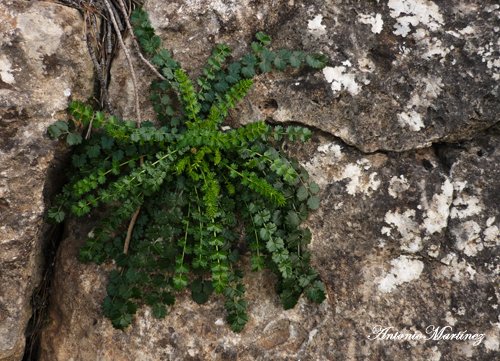Tiny plants cling on the rock surface overgrown with moss. Waterfall Cascada de Latas rumbles on the background.
| Category | macrophotography |
| Location | Ecuador |
| Settings | ISO 125 f/4.5 1/60 |
| Camera | Sony Alpha 5000 |
| Lens | Sony 3.5-5.6/16-50 |

If you liked this post, consider giving it an upvote or resteem. Follow me for more cool stuff and stay loco!
Me on the other platforms:
To view my posts on @SteemitWorldMap click here:

My recent posts:
Rainforests of Ecuador, the Importance of the "Rain-" Part
Indians on the Streets of Ecuador
[Stoner Travels #2] Ecuador / less than 24 hours left in smoke.io airdrop
Another Brick in the Wall
Tall Mountains, Deep Gorges and Spectacular Waterfalls of Tungurahua (Baños)
Rain over Port-au-Prince lit up by the Setting Sun
Autumn Overture in Pamirs
The stories I'm most proud of:
Rainforests of Ecuador, the Importance of the "Rain-" Part
Sectants and magic potions, Ayahuaska experience in Colombia
Haiti: Poverty, gangsters and UN party
Exhausting ride along the border of Afghanistan
Overnight adventure in Haunted Bhangarh, a Ghost Town in India
Beheaded Goat and Bloody Idol above the Clouds in Himalayan Temple


Nature is definitely magical ... if we look at a rock in a microscope, we will see many cracks, from the smallest to the most clearly visible and if we drill a well in rocks, we will most likely find water, often only 5 to 10 meters below the surface. Then, this internal water that the rocks have can go up through the cracks, due to the capillary principles of nature; Of course, if a rock is in a humid environment, it will simply be saturated with water on its surface.


In this way we already have an essential element for the growth of plants: water; but, the greatest difficulty that imposes for a plant to live on the rock is the scarcity and practically absence of land where to root and settle; however there are specialized plants (ferns, lichens or mosses), which can be fixed with great ease on these small fissures and cracks.
Plants that specialize in living on rocks are called rock-dwelling plants (rupicolous plants) and use different types of strategies to colonize this seemingly hostile environment. Some species penetrate their roots into cracks and fissures to anchor in the rock. In these cracks, whether small or large, in addition to ferns and mosses, we can find the so-called "breaker" plants of rocks like those of the genus Petrocoptis.
Petrocoptis pyrenaica is a "breaker" plant of rocks
In any of the varieties of the rupicolous plants, we are talking about exclusive habitats that few plants dare to colonize and, let us say, to "dominate" occupying a good part of the available surface.
Greetings.
Extraordinary photography, magical and natural place, greetings
Que bella es la naturaleza, excelente foto.
What a photography cool!!!!!!!!
Congratulations, Your Post Has Been Added To The Steemit Worldmap!
Author link: http://steemitworldmap.com?author=nameless-berk
Post link: http://steemitworldmap.com?post=a-glimpse-of-paradise
Want to have your post on the map too?
indeed it does look like a paradise
I've verified that your photography is original, and that means it's so good that I had to check.
Your post has just been upvoted and resteemed by @yourluckyphotos - The nonprofit service that verifies and promotes original photographers on Steem.
Your photography will be featured in the 'Today's Lucky Photos' showcase alongside numerous other photographers. Tag your posts with "yourluckyphotos" for a better chance of being featured.